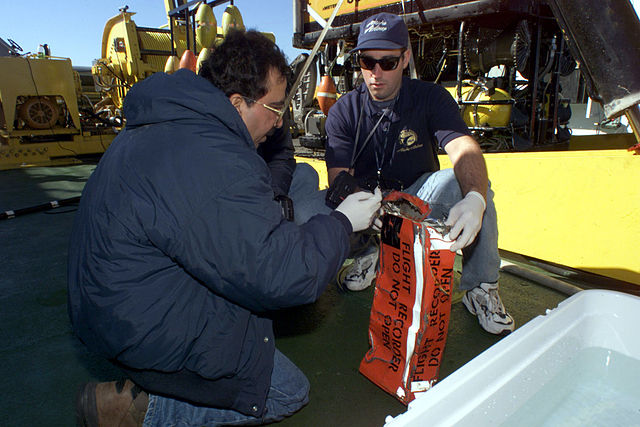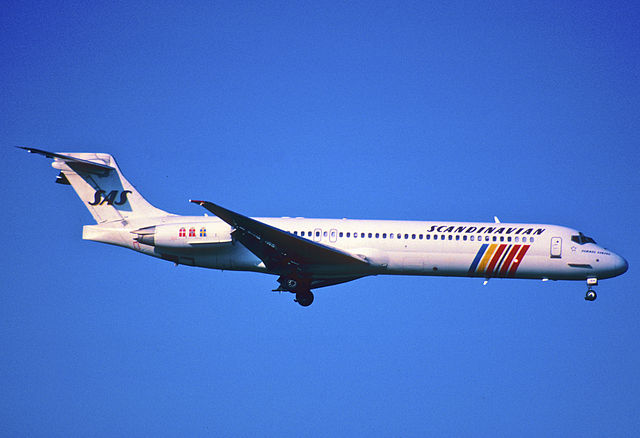Alaska Airlines Flight 261
Alaska Airlines Flight 261 was an Alaska Airlines flight of a McDonnell Douglas MD-80 series aircraft that crashed into the Pacific Ocean on January 31, 2000, roughly 2.7 miles north of Anacapa Island, California, following a catastrophic loss of pitch control, killing all 88 on board: two pilots, three flight attendants, and 83 passengers. The flight was a scheduled international passenger flight from Licenciado Gustavo Díaz Ordaz International Airport in Puerto Vallarta, Jalisco, Mexico, to Seattle–Tacoma International Airport near Seattle, Washington, United States, with an intermediate stop at San Francisco International Airport near San Francisco, California.
N963AS, the Alaska Airlines MD-83 aircraft involved in the accident, seen in 1992
Preparation of the flight data recorder for transport from the MV Kellie Chouest on February 3, 2000
Memorial sundial in Port Hueneme, California
The McDonnell Douglas MD-80 is a series of five-abreast single-aisle airliners developed by McDonnell Douglas. It was produced by the developer company until August 1997 and then by Boeing Commercial Airplanes. The MD-80 was the second generation of the DC-9 family, originally designated as the DC-9-80 and later stylized as the DC-9 Super 80 .
Stretched, enlarged wing and powered by higher bypass Pratt & Whitney JT8D-200 engines, the aircraft program was launched in October 1977.
The MD-80 made its first flight on October 18, 1979, and was certified on August 25, 1980. The first airliner was delivered to launch customer Swissair on September 13, 1980, which introduced it into service on October 10, 1980.
McDonnell Douglas MD-80
An MD-81 of the type's launch operator, Swissair It was certified by FAA in August 1980
An MD-87 operated by Scandinavian Airlines. The shortest variant, certified in October 1987.
An EAT MD-87 for aerial firefighting was certified by FAA in 2014. Note the external ventral tank which adds a 4 ft "vertical safety distance" between the released retardant flow and the engines.







